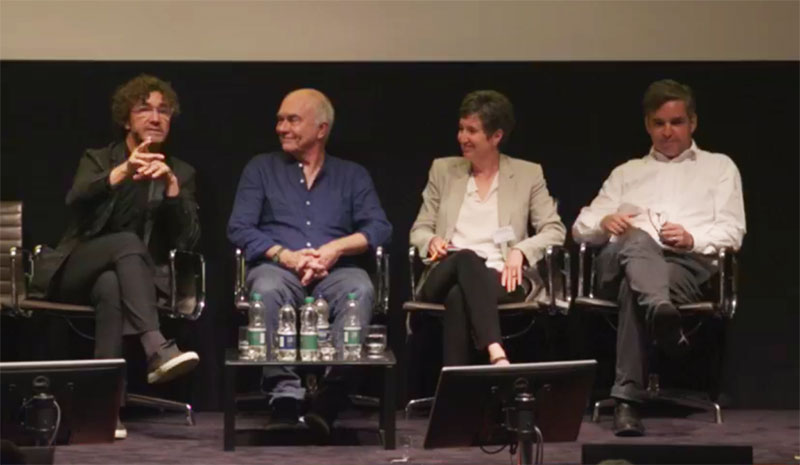Written by Hani Salih, Part 1 student at the Manchester School of Architecture.
It seems as though the age of cynicism is upon us; the constant flow of information via social media and the 24-hour news cycle has made headlines more hyperbolic, aggressive and polarising in a bid to compete for the attention of the viewer. As a result, pessimism has become the norm as we head into an increasingly uncertain future. Despite this, there is an undercurrent of optimism within the youth - and most apparently in young architects.

Practices and architects like Shigeru Ban, Alejandro Aravena and Architecture for Humanity have inspired many who have gone on to reject and critically evaluate the concept of the “starchitect” in favour of what is a more personal and down to earth practitioner. A rejection of the establishment is typical in young people - across many generations - however, the cynical nature of the zeitgeist only acts as a catalyst, as frustration boils over to localised points of action. One could argue that this frustration has always been there, but as the Internet’s reach begins to cover all four corners of the globe, access to information has democratised many previously “guarded”, or simply inaccessible, libraries of information removing many of the hurdles towards action in the process.
Today, you no longer need to be in the same room as your professor to attend lectures, the same city to buy your train tickets or in the same continent as your colleagues to attend a meeting. New technologies such as 3D printing and cloud computing promise to usher in an age of free and available design, information and technology sharing like no other. We as architects risk being left behind if we do not adapt to this new connected, always online, informational landscape. My experiences within the industry have taught me that the age of the architect as a master builder has long gone, the construction process has become drawn out and the industry now has a higher degree of specialisation than before. This is not necessarily a bad thing, of course. But I believe this is one of many reasons why young architects end up pursuing alternative careers, which they perceive to be more fulfilling than the traditional route to certification. However, they still find ways to apply the skillset sharpened by their architectural education. And so, the specialisation of the industry combined with the democratisation of technical design tools has allowed the new wave of young ambitious architects to create on smaller community-based scales, generating a meaningful impact locally instead of the globalist approach of the “starchitect”. It is through these smaller interventions that young architects find themselves involved in the field of development and urban planning, as rapid rates of urbanisation spur on the growth of cities and urban centres in an unchecked expedient manner.
At the RIBA’s International Conference, which took place on 4 July this year, the New Urban Agenda was central to the topic of discussion in each panel. This, in turn, was based on the goals set by the UN in their 2030 Agenda for Sustainable Global Development. It was a great opportunity to get a take on the direction of this new wave of ground-up architecture from established architects, researchers and practitioners in the field. But perhaps the most striking of these panels was the one titled “A sense of belonging – how to create a cohesive society”, featuring Jo Noero, and Alfredo Brillembourg and Hubert Klumpner of Urban Think-Tank, and chaired by Suzanne Hall. Noero’s brutal honesty combined with Alfredo and Hubert’s dynamic presentation style provided a memorable session. Each member of the panel had their own ideas and advice to share. Some were more radical than others; regardless, all were a pragmatic response to the frustration young architects had. One must demand more.

Alfredo reminded the audience that the architects of today are a result of the new generation - a much more socially engaged and technologically driven generation, and so we must place ourselves in the context of the times we live in, in order for us to fully understand and respond to the issues that are facing us today. Hubert spoke of demanding more from your own education, but also not being afraid to become an “architectural nomad” and going to other schools of architecture if you’re left feeling dissatisfied with your education. Noero spoke of demanding more from yourself by changing your attitude and looking within yourself, taking up the challenge of bringing about change through this skillset that you have as an architect. Suzanne spoke of demanding more from your city by going out onto the streets, seeking and talking to the people who live in the city and exploring the often overlooked cracks and crevices of your society and surrounding urban fabric. All of the members of the panel had an awareness of the state of architecture and its relative successes and failures across the world. And in their frank criticism they found themselves echoing many of the young contingent’s desire for change in the audience, myself especially.
“Everything outside of the classroom is where you’re going to learn the most” – Alfredo Brillembourg
As a student going into my final year of undergraduate study, I feel a strong desire to demand more from, not only my education but also, the leaders of the industry- an industry that, historically, has been one that rewarded and encouraged progress and long-sightedness. I personally believe that architects have a particular skillset that will make them invaluable in the field of development in the near future as many countries in the global south begin to transform their explosive urban population growth into equally explosive economic growth. And perhaps what was the most encouraging aspect of the conference wasn’t just the readiness of the professionals to engage with the fresh-faced recently graduated and, the not-so-fresh-faced students, but more so the passion and promise in many of the young constituents of the conference’s attendees.
“We don’t have to reimagine our roles, we just have to do it better” – Jo Noero.
It seems as though we’ve already reached the tipping point- Alejandro Aravena curating the 2016 Venice Architecture Biennale helped the socially conscious, community driven architectural philosophy break into the mainstream in a big way. As this shift gathers momentum, it’s more important now than ever for young architects and students to lead this conversation in order to create a new paradigm leading towards a new architecture. It all begins with a simple question, what more can we do?
The International Conference was live streamed by Dezeen. The videos are now available to view, in full, on Dezeen.









